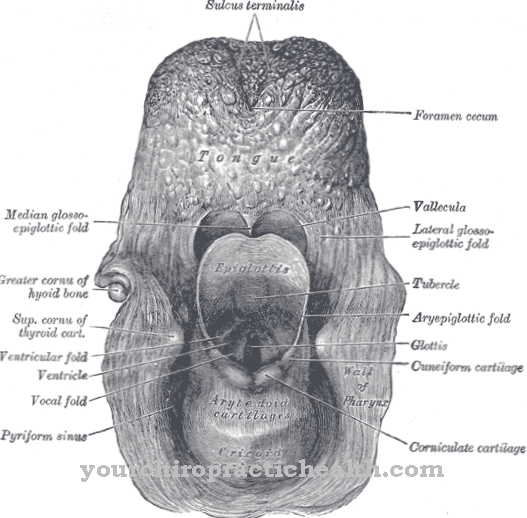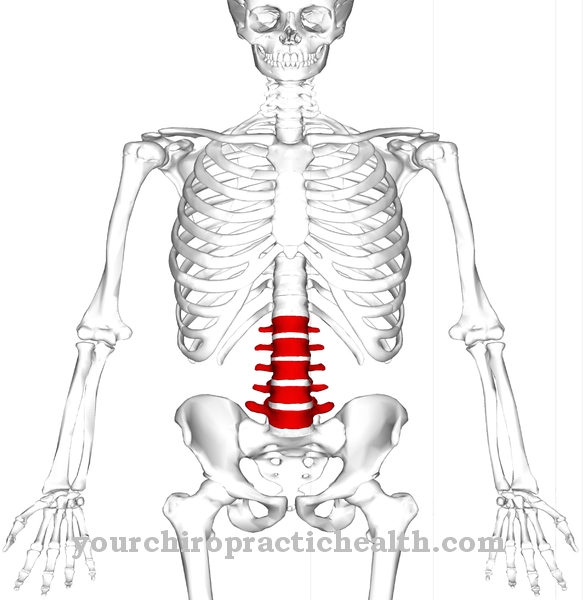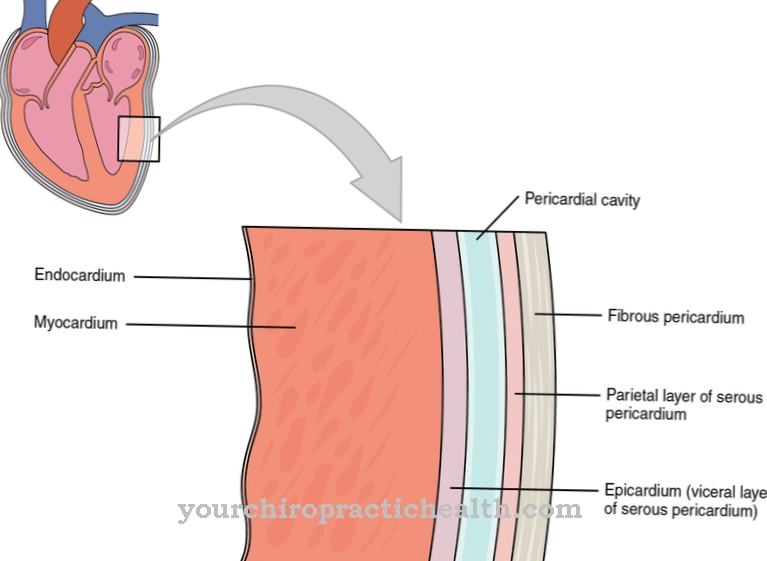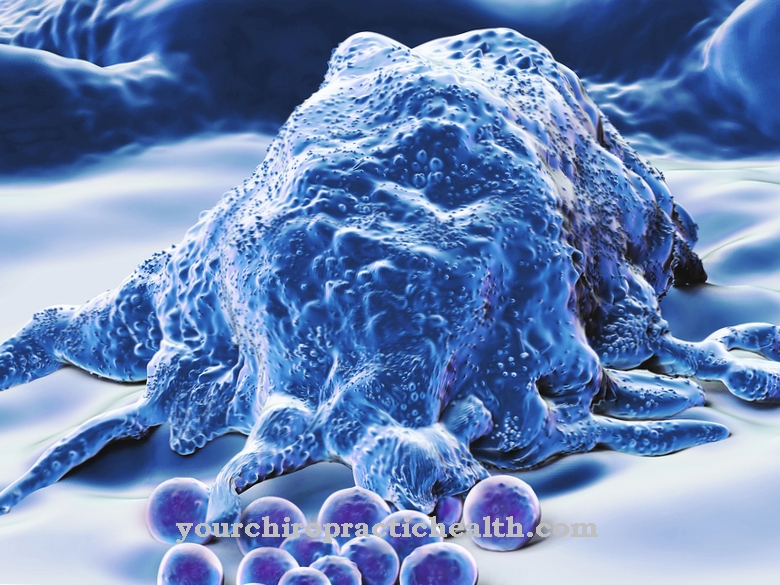The perineum or the dam is the area that separates the anus from the genitals. The area is mostly made up of muscles, but has highly sensitive skin. The perineum is therefore also known as the erogenous zone.
What is the dam?
The perineum is the tissue that separates the anus from the genitals. The male dam extends from the anus to the base of the scrotum. The female reaches from the anus to the approaches of the larger labia. The anogenital distance is a unit of measurement that measures the distance between the anus and the root of the penis or vagina.
Studies have shown that this distance is twice as long for men as it is for women. Measuring it has been suggested as a non-invasive method for early detection of male feminization in newborns.
In this way, a statement can be made about the likelihood of functional disorders in reproduction at a young age and also in adults. Cracks and cuts are common in child birth. However, massage can prepare the perineum for this excessive strain.
Anatomy & structure
The dam lies below the pelvic floor and lies between the legs. It is a tissue area in the shape of a diamond between anus and vagina or anus and testicles.
Its definition varies as it can only refer to the external structure, but it can also include the deeper structures below the skin. It is an erogenous zone for both men and women, as many nerves converge here.
The perineum is the central part of the dam region. Mainly it consists of muscles that belong to the pelvic floor muscles. This is divided into two areas, namely muscles of the urogenital region and muscles of the anal region.
The skin and the sub-tissues that cover it are criss-crossed with many branches of the pubic nerve. This makes the dam a sensitive region of the body. It is supplied with blood via the internal pelvic artery, which goes off indirectly from the aorta.
Tasks & function
The first function of the dam is to separate the genital area from the anus area. This prevents bacteria from entering the vagina from the intestines.
At the same time, the three layers of the pelvic floor muscles converge in it, which stabilize the body and ensure continence. It also has a reflexive effect on sneezing, coughing, laughing, hopping or carrying heavy loads to prevent incontinence.
The perineum skin is elastic, so that it can react flexibly to the size of the penis or the stool during both sexual intercourse and defecation. Because many nerve branches meet in this small part of the body, the perineum is considered an erogenous zone.
Massage or pressure on this area can be energizing. In men, the erection can be increased by applying pressure to the perineum. If you touch it, the external anal sphincter contracts reflexively. This is called the perineal reflex.
Illnesses & ailments
During childbirth, the perineum can tear from the pressure on the child's head or shoulder. There are different classifications, each showing a different degree of severity.
Grade one means that there are tears in the back of the vaginal skin. Grade two means that the tissue of the perineum is torn. The third degree affects the intestinal sphincter and the fourth degree affects both the sphincter and anus. Inflammation and profuse bleeding are very rare in this area.
As a precaution, a perineum incision (episiotomy) is made in some births if the tissue of the perineum does not stretch far enough, the child suffers from a lack of oxygen, the child is a premature baby and is therefore not yet so resilient, or it is born in a breech position.
In many cases, a perineal incision must also be made when giving birth with forceps or the suction cup. This is done during a contraction, when the woman only feels this one pain. After the birth, both the perineal tear and the perineal incision are sutured under local anesthesia.
The healing process can be painful and often involves restrictions on sitting, defecating, and urinating. It usually lasts six weeks, because until then most of the threads have dissolved. A good midwife can remove this beforehand, however, when the wound has healed appropriately.
Vulvar cancer, a type of cancer in the vagina, can also affect the perineum. Signs of this are itching and reddened areas in the vagina and perineum. Pain during sexual intercourse, when defecating or urinating can also indicate this.
With a lowering of the pelvic floor, which becomes more likely with increasing age, there is a lowering of the internal organs of the pelvis and abdomen. Women who have had many or difficult births are particularly at risk of this. It manifests itself as a voiding disorder or a weak sphincter muscle. Back pain in the lumbar vertebrae is also not uncommon.
























.jpg)



